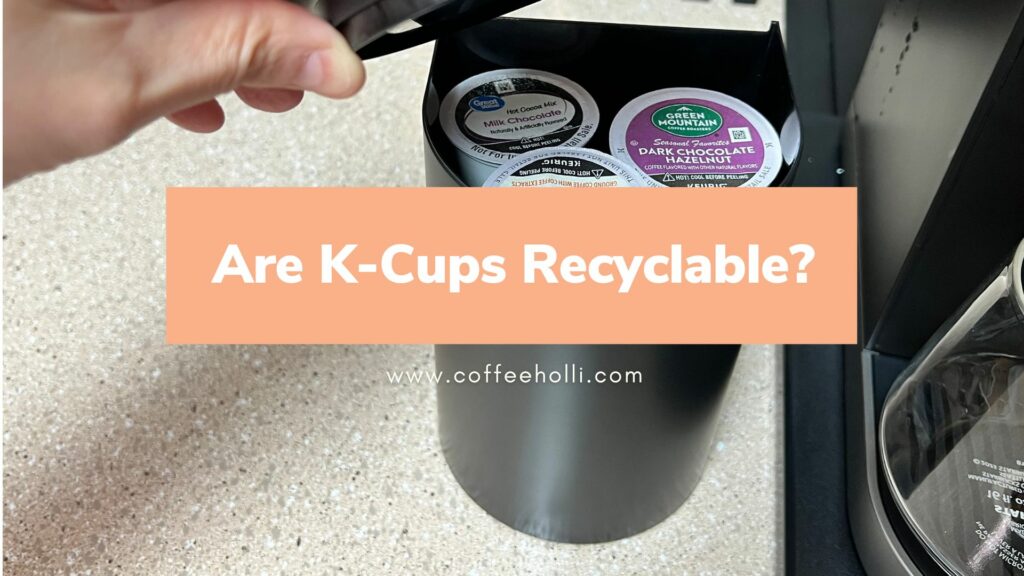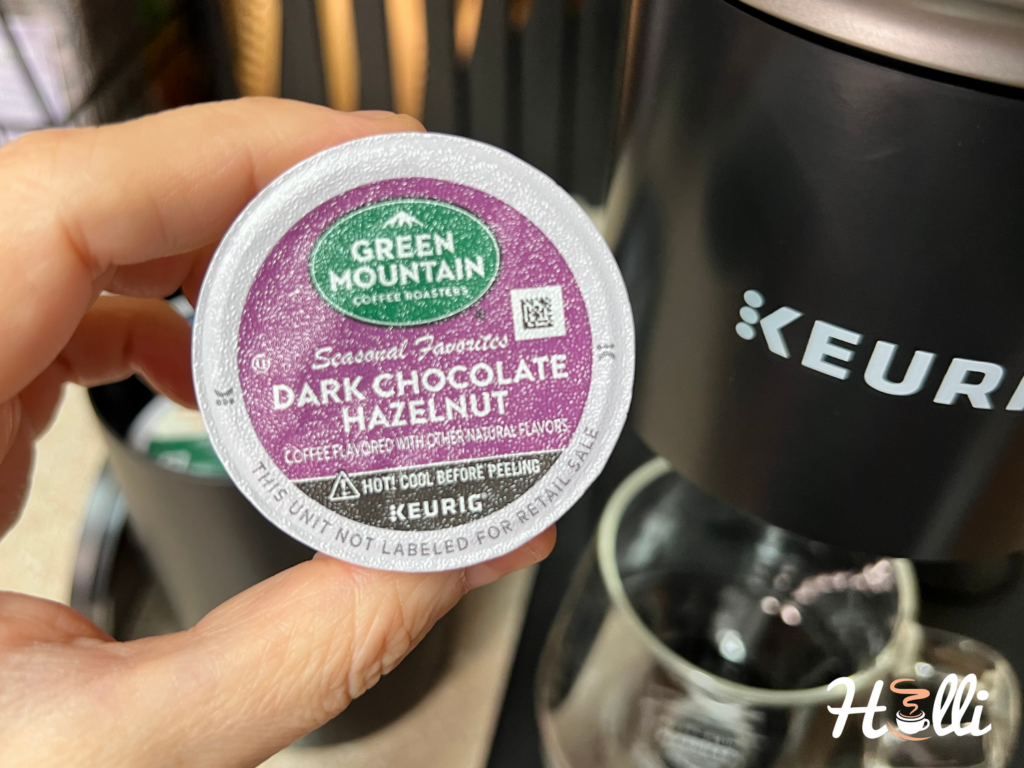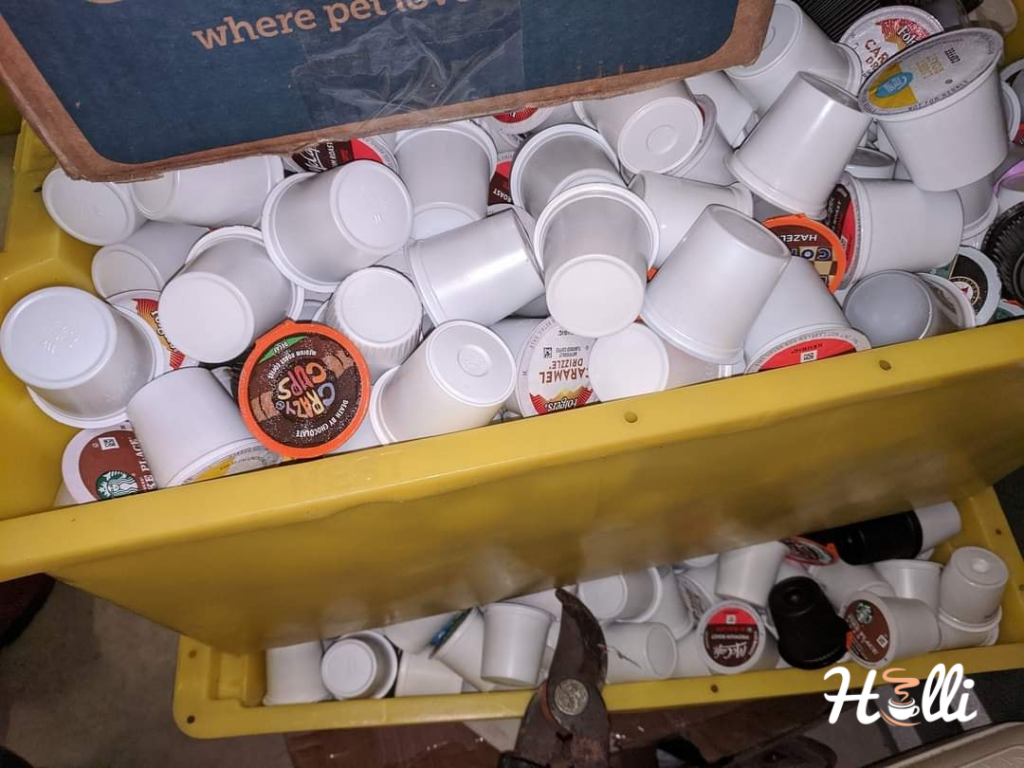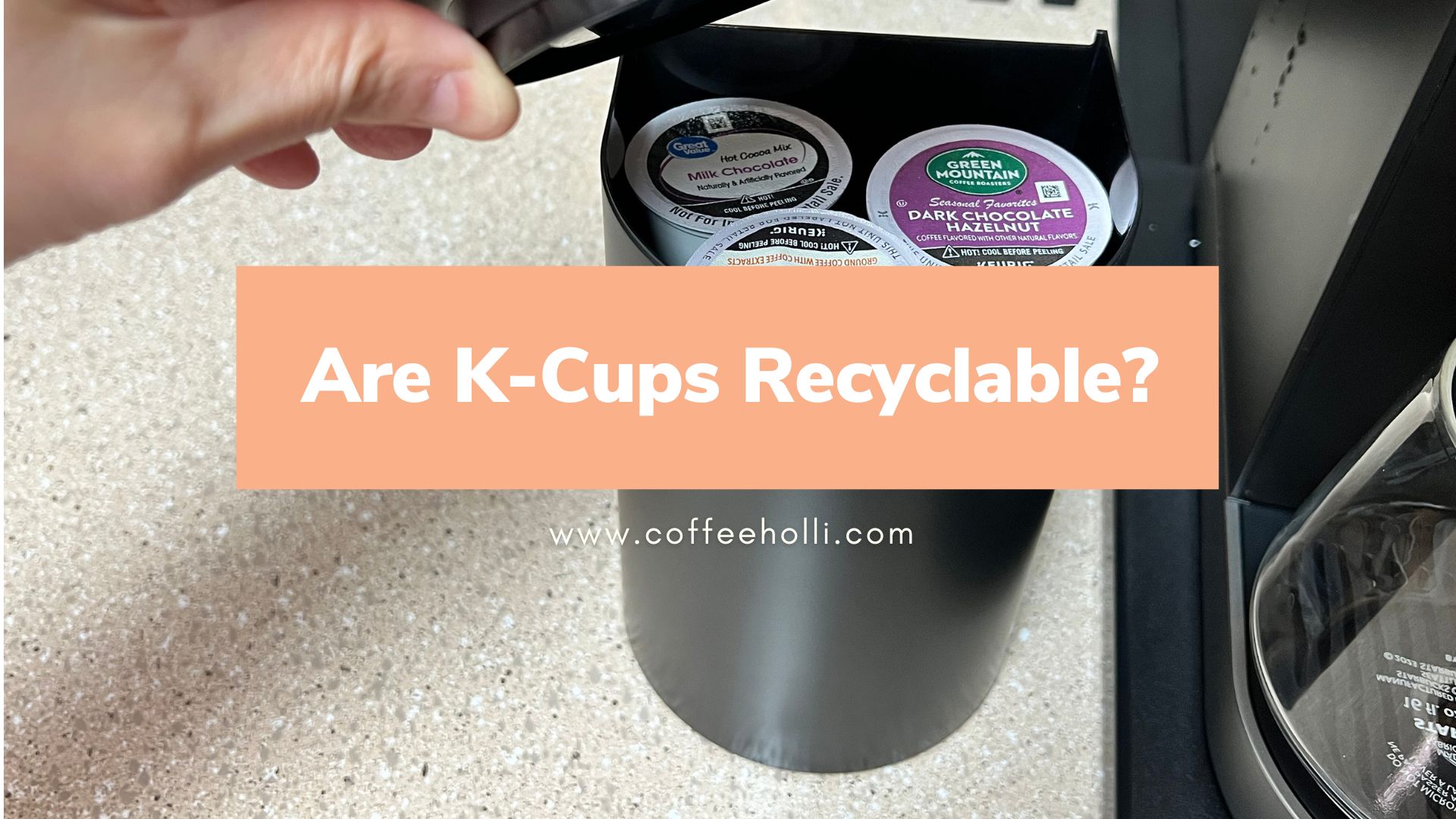Ever wondered, “Are K cups recyclable?” If so, you’re not alone. The answer is yes, but it’s not as simple as tossing them in your recycling bin.
In this article, I’ll guide you through the multistep process of recycling K cups. From separating the aluminum top to removing the inner filter, you’ll learn how to prepare your used K cups for recycling. It’s a small step that can make a big difference for our planet.

Table of Contents
Are K-Cups Recyclable?
Yes, K-Cups are recyclable. In fact, since 2020, all Keurig K-Cup pods have been crafted using recyclable polypropylene. This type of plastic, commonly labeled as #5, is widely accepted in curbside recycling programs.
Keurig maintains that their K-Cup pods are not harmful and even run a recycling program. It’s left to you as a user to learn how to recycle these pods after use properly.
As this user puts it:
“Rethink (are we doing it the right way?) Refuse (if we are not doing it right, don’t do it) Reduce (get only what you need) Reuse (if you have bought it, try to give another use to it as much you can), and only then: Recycle it!“
To do so:
You need to break down the K-Cup into its separate parts. This includes the plastic cup, filter, and coffee grounds.
Once you’ve done that, take the plastic portion and place it in your recycling bin.
But how do you make the job easier? There are multiple ways.
- Use a K-cup recycling tool
- Do it manually with items at hand
There are specially designed tools available on the market, such as the K cup recycling cutter – a handy tool meant to separate the top and filter of the K cup in a singular action.
This nifty gadget can be found on popular websites like Amazon and eBay.
However:
If you’re more inclined to engage in a DIY method, let me clarify the necessary steps. First, let your freshly brewed K Cup chill. Remove the aluminum top using a knife.
Now:
Does an extra step decrease convenience? Possibly. But think of the benefit to our planet.
These pods are completely recyclable, offering a hopeful rebuttal to the environmental impact of coffee pods consumption.
Materials Used in K-Cups

Delving into the details:
Let’s uncover what a K-cup is made of. With millions of cups being employed daily, it’s an important piece of knowledge to have in hand.
It also helps properly contextualize alternatives, like the compostable coffee pods used in this interesting study, with a high recycling success rate.
The main components of your beloved K-cups are:
- Plastic cup: This outer casing, typically made from Polypropylene (also known as #5 plastic), acts as a shield for the coffee. It protects from external factors such as moisture, oxygen, and light, ensuring the coffee within remains fresh and flavorful.
This robust material is chosen for being durable, heat-resistant, and food-safe, and it’s recyclable. Yet, it’s important to note that its recyclability can vary based on your local community’s recycling facilities.
- Aluminum foil lid: There’s a food-grade aluminum foil lid at the top of the K-cup, creating an airtight seal. This prevents environmental exposure, maintaining the coffee’s original taste. The material is flexible and seals perfectly onto the plastic cup.
- Filter: Inside each K-cup, you’ll find a paper filter. It’s usually made from abaca fiber, similar to tea bag material. It’s completely natural and biodegradable, allowing water to flow through the coffee, removing any grounds. This filter sits securely inside the plastic cup, ensuring only liquid coffee reaches your cup.
- Coffee Grounds: Lastly, the coffee grounds packed into these K-cups are carefully selected and ground to a particular size to optimize extraction and flavor during the rapid brewing process.
Once roasted, these grounds are promptly packed into K-cups with a nitrogen flush to remove any lingering oxygen from the pod.
Challenges in Recycling K-Cups

When we delve into K-cup recycling, we find the process fraught with complexities. One of the primary challenges is separating the K-Cup components for recycling.
You see:
K-Cups are well-made and hard to disassemble. As this Keurig user explains, “I use k cups and I do recycle them, but it’s hard to completely get every bit of the paper filter out”
There’s the aluminum foil top, the recyclable #5 plastic cup (polypropylene), the biodegradable paper filter, and those aromatic coffee grounds.
Each of these must be individually sorted, which is time-consuming and labor-intensive.
For further context:
Let’s consider the recycling rate of polypropylene products in the US. It’s shockingly low at 9%. Keurig transitioned to using polypropylene in 2020, hoping to address recycling issues.
Yet, we can’t overlook the small size of K-cups. They can slip through sorting screens at recycling facilities and risk contaminating other recyclable materials or ending up in landfills.
Furthermore:
The presence of coffee grounds in the mix exacerbates the problem. It contaminates the recycling stream, making the plastic less viable for recycling.
Overall, the environmental impact of these improperly disposed K-Cups is enormous. They contribute to the escalating plastic pollution problem in our oceans and landfills.
Unfortunately:
Regional variations in recycling infrastructure and practices further muddy the waters for K-cup recycling.
These variances underscore the need for localized solutions and increased investment in recycling technologies.
Thankfully:
Extended Producer Responsibility (EPR) programs and initiatives focused on eco-friendly packaging provide hope in our quest to curtail the environmental impact of K-Cups.
That being said:
As we peer into the complex world of K-cup recycling, one thing becomes clear. We should not only focus on recycling but aim to redesign these products for more straightforward recycling.
Consumers, too must join the fight to protect the environment. To minimize waste, they can adopt sustainable coffee consumption habits, such as reusable filters or compostable pods.
Keurig’s Efforts and Industry Responses
Keurig’s grappling with K-Cups’ recycling challenges is a testament to the broader struggle against plastic pollution. While the components of the K-Cup are technically recyclable, the process isn’t easy or efficient.
Now:
The low recycling rates for polypropylene products and the contamination risks posed by small K-Cups are significant hurdles. Regional differences in recycling infrastructure further complicate matters.
Yet:
Hope isn’t lost. The push for redesigning K-Cups and the call for consumers to adopt more sustainable coffee habits are steps in the right direction.
It’s a collective effort; every small action can contribute to a more sustainable future. Let’s not forget: the power to protect our environment lies in our hands, and it starts with the choices we make every day.


